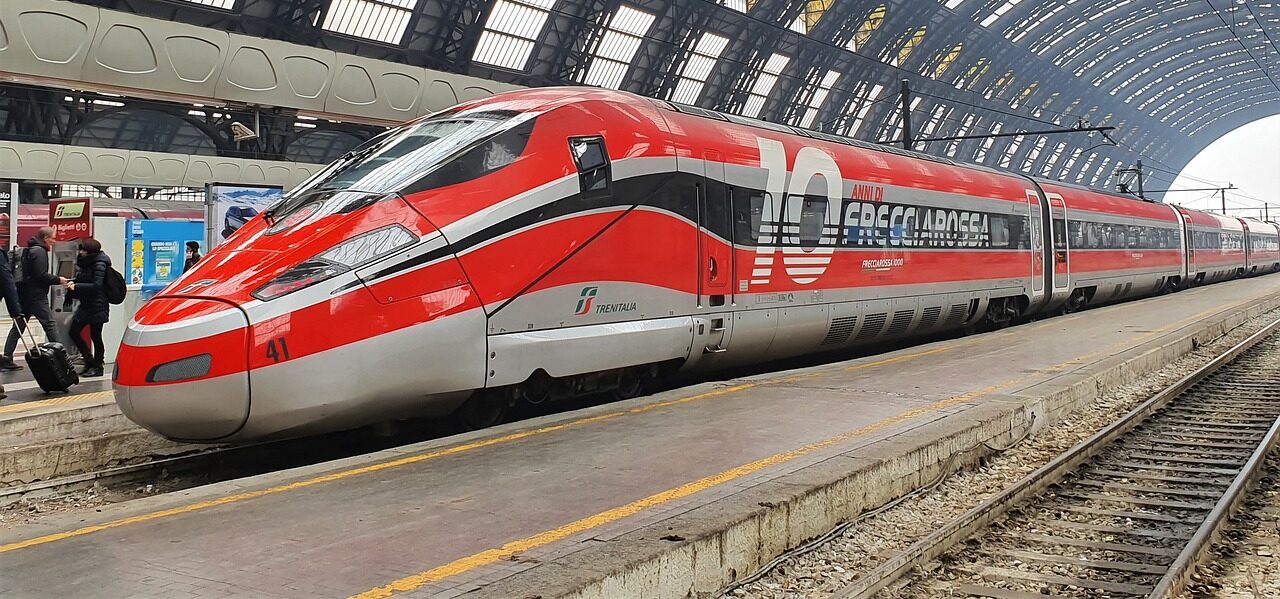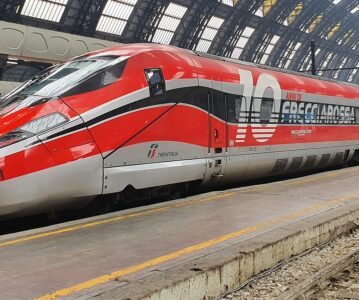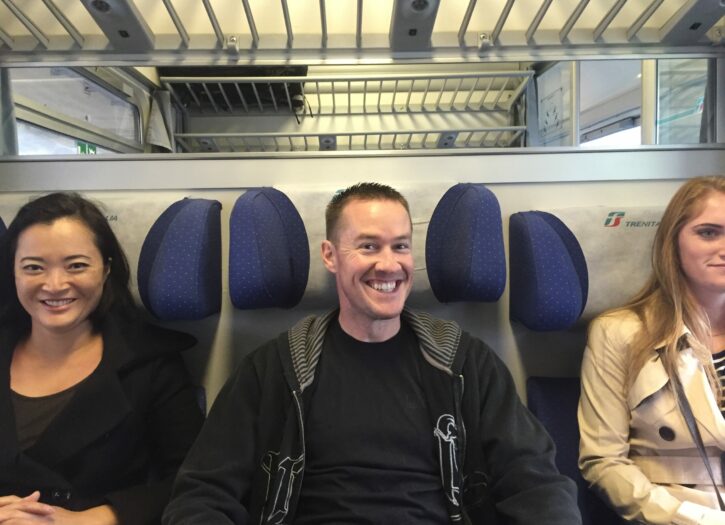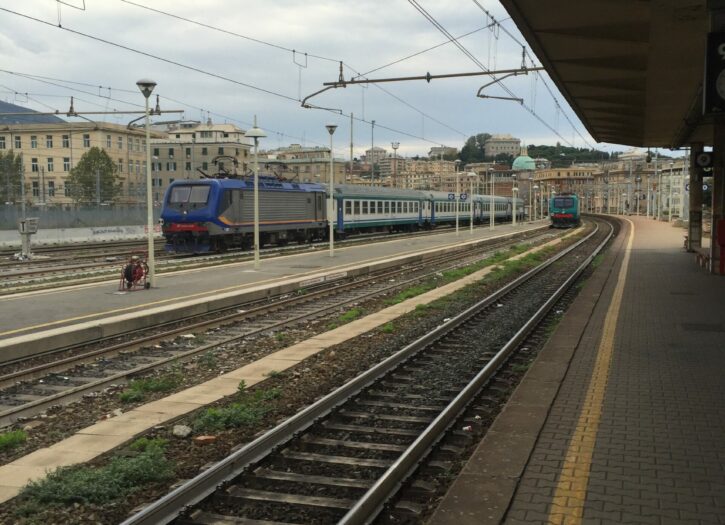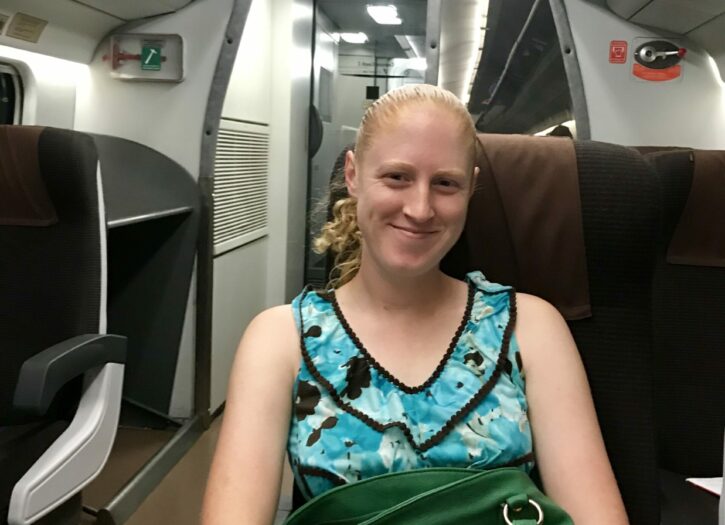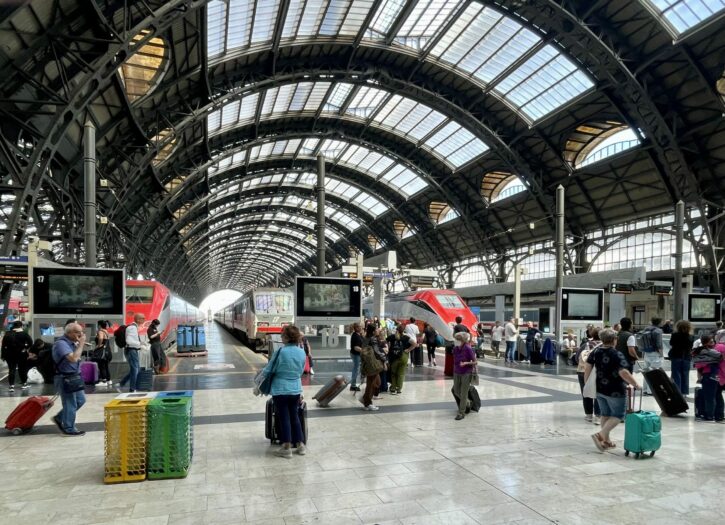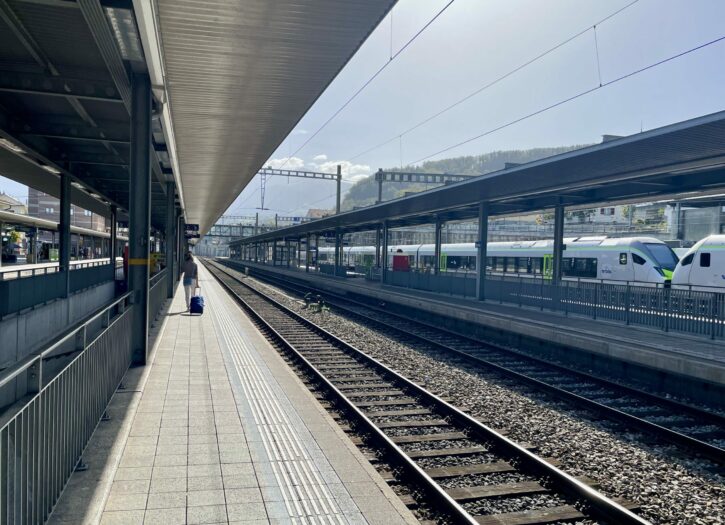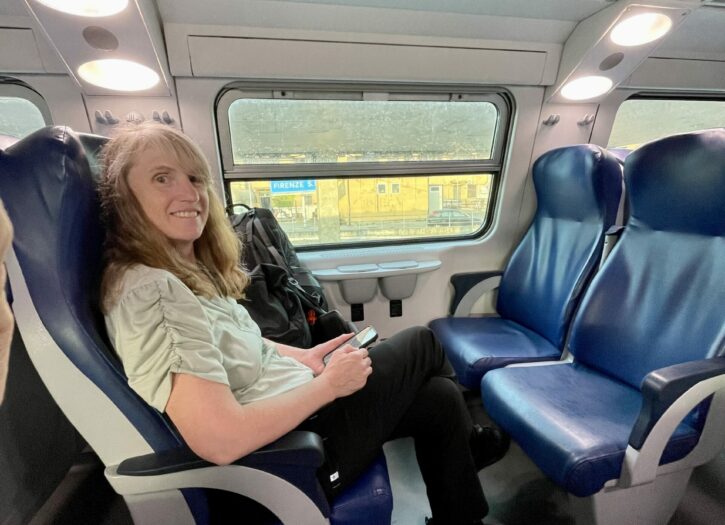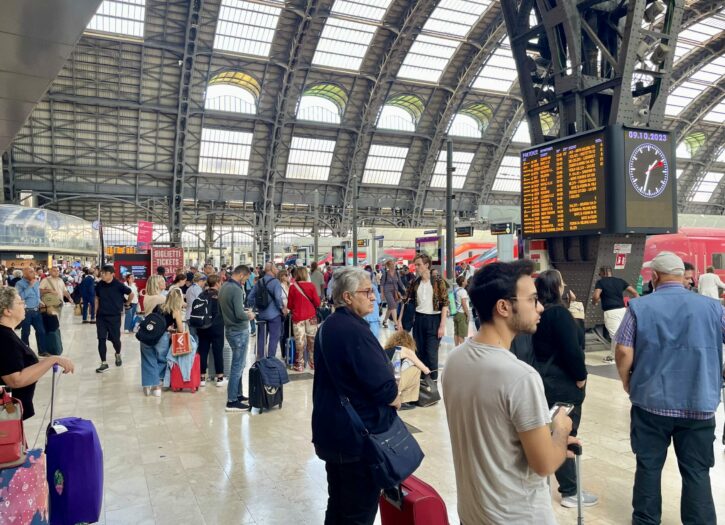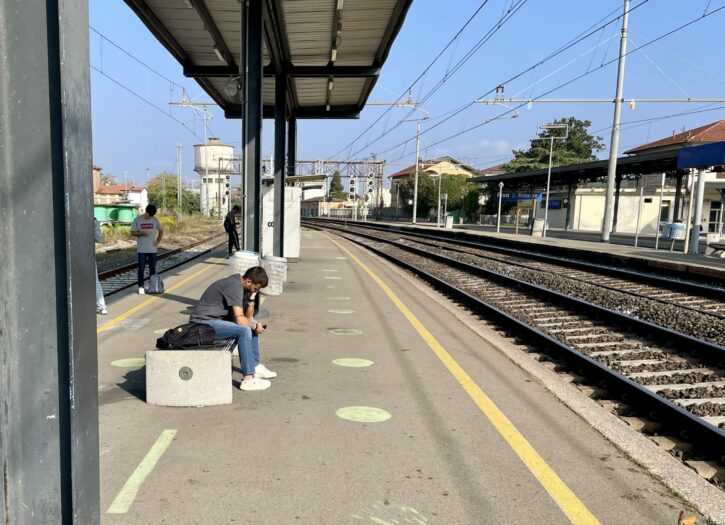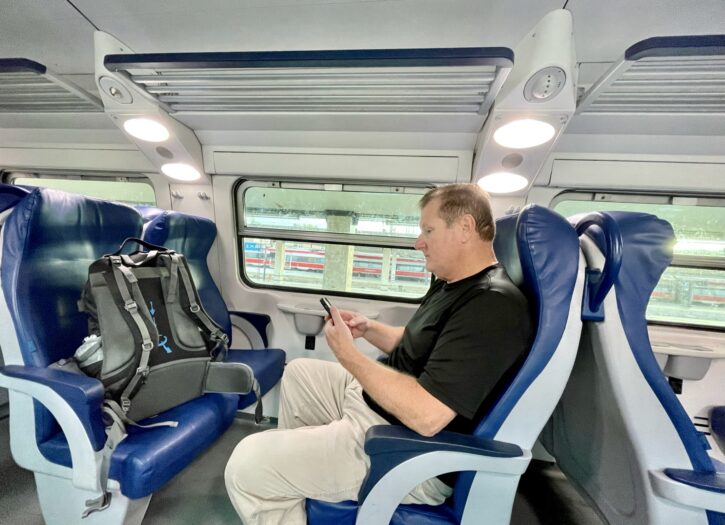Trains in Italia
Train travel in Italia is by far the best way to get from city to city. The stations are centrally located and you can usually walk to most destinations without needing other forms of transportation. On occasion we use buses in addition to our feet for reaching locations outside the city centers. Most of the popular tourist spots are within walking distance from a train station. The trains have been our primary form of transportation in Italy on three different trips to Europe. We have never felt that we missed anything without renting a car. In fact, seeing how narrow the streets are and how busy the traffic can be, it is not surprising that trains are primary mode of transportation for residents as well.
Europass and First Class
On our most recent visit we used a Eurail pass. This allowed us to travel through three other countries as well. On a recommendation, we purchased first class tickets. This proved to be beneficial while in France and Switzerland. We had first class train cars to ourselves and plenty of leg room to stretch out. However, while in Italy, there seemed to be no need for the first class ticket. Most of the trains we used did not have separate classes and the trips were shorter between stations. Overall, the first class tickets were still worth the minimal price difference.
Milan
We travelled through Varzo and Domodosolo without stopping. Our first overnight stay was in Italy was Milan. The Milano Centrale station was bustling with what appeared to be a mix of tourist and business traffic. The building itself is a marvel to look at with the domed glass framework ceiling allowing light to highlight the bright red sleek trains that were coming and going. While in Milan we visited the Duomo di Milano and the Sforzesco Castle. The city of Milan is a busy metropolitan area, but history of the region is evident in the architecture and art that is spread throughout the city.
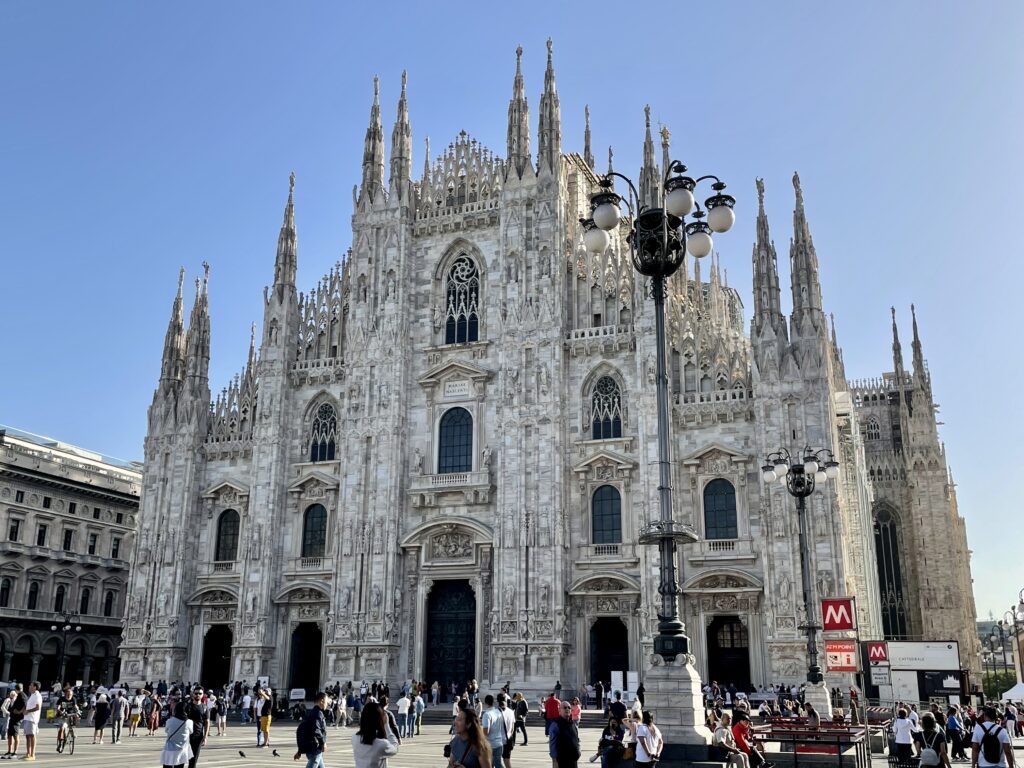
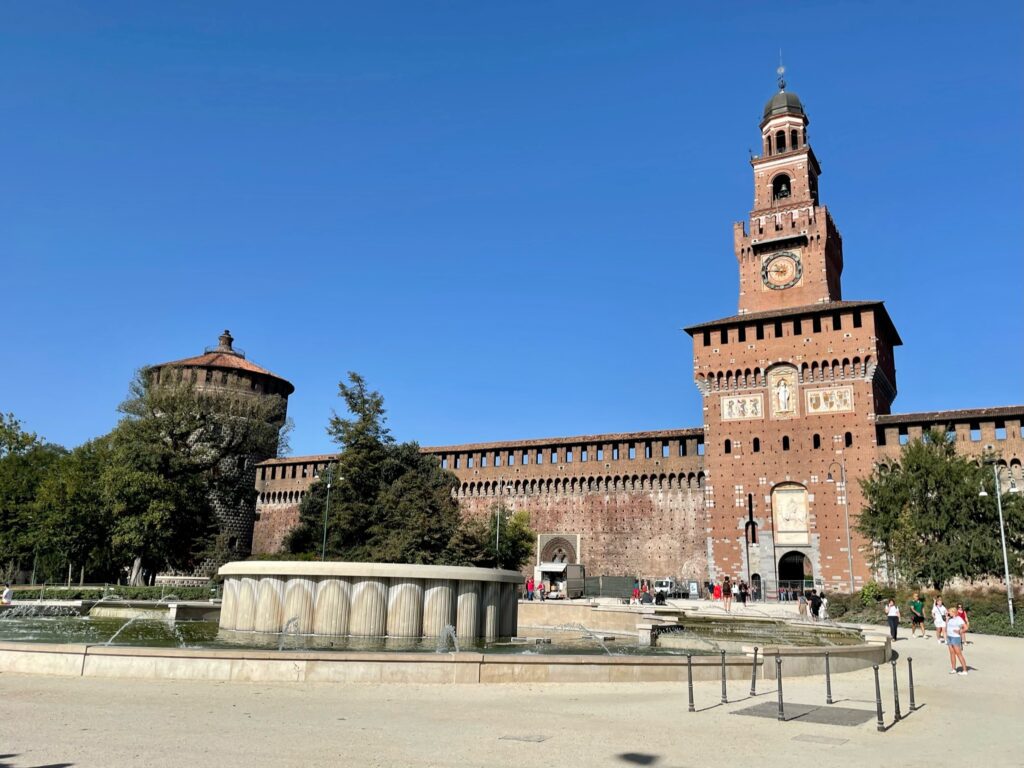
Florence and Pisa
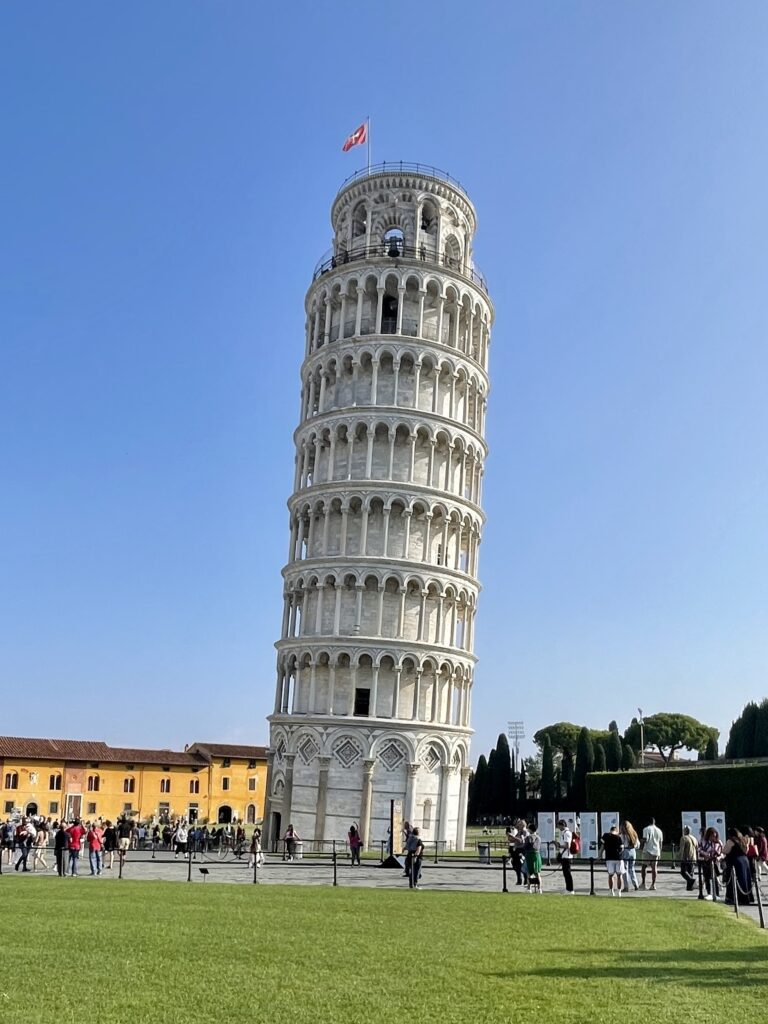
The train next took us to the Renaissance inspired city of Florence next. I had been here once before for a brief visit. This time we set aside a few days so that we could explore more of the many neighborhoods surrounding the city center. We spent a minimal amount of time at the crowded tourist attractions and found many hidden gems. One such spot was the Boboli garden hidden high atop a hill overlooking the city. Unlike other museums which had long wait lines, we decided to stroll through the Pitti Palace. Another gem that we found by going in the opposite direction of the crowds was the Medici Crypt. All places surpassed our expectations while keeping us away from the crowds. On our way out of Florence, we hopped off the train in Pisa for the obligatory photo with the famous leaning tower. We disembarked at the Pisa Centrale station. However, we re-boarded the train at the much less crowded station of Pisa S. Rossore. All travel was by train or foot.
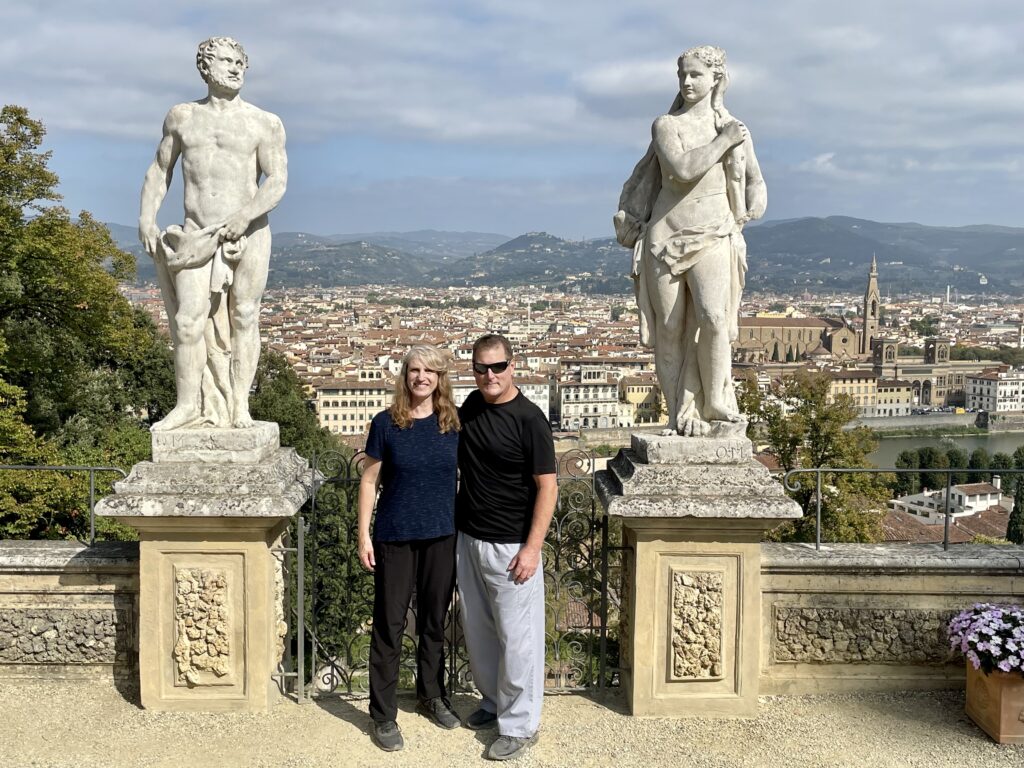
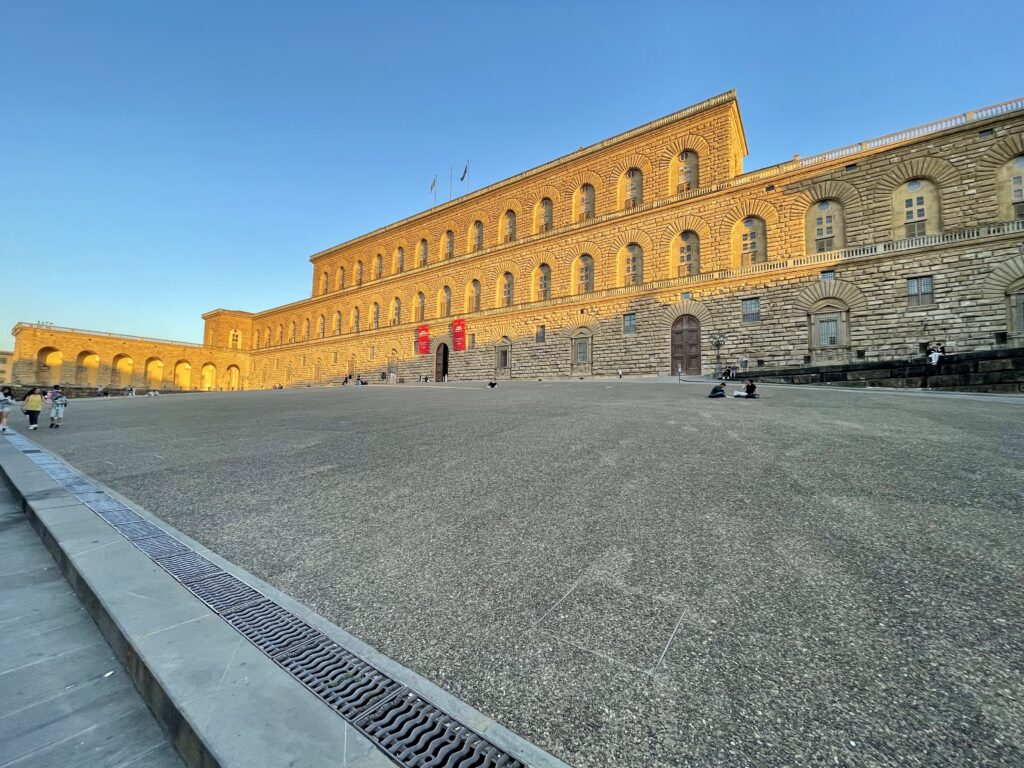
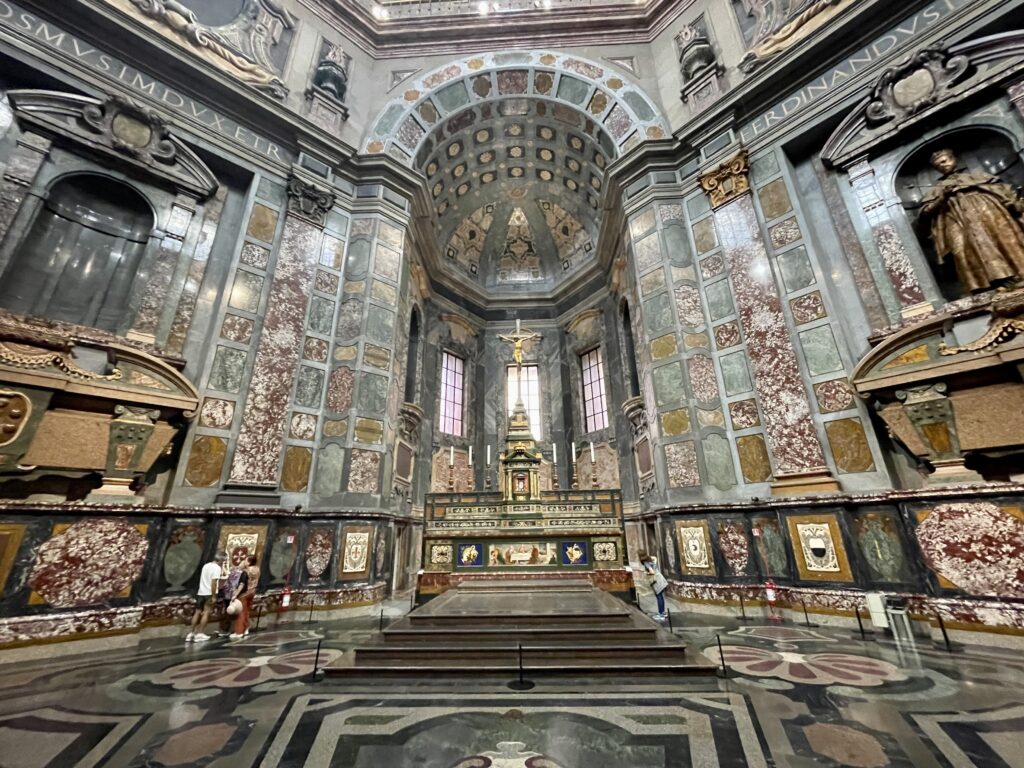
The Cinque Terre
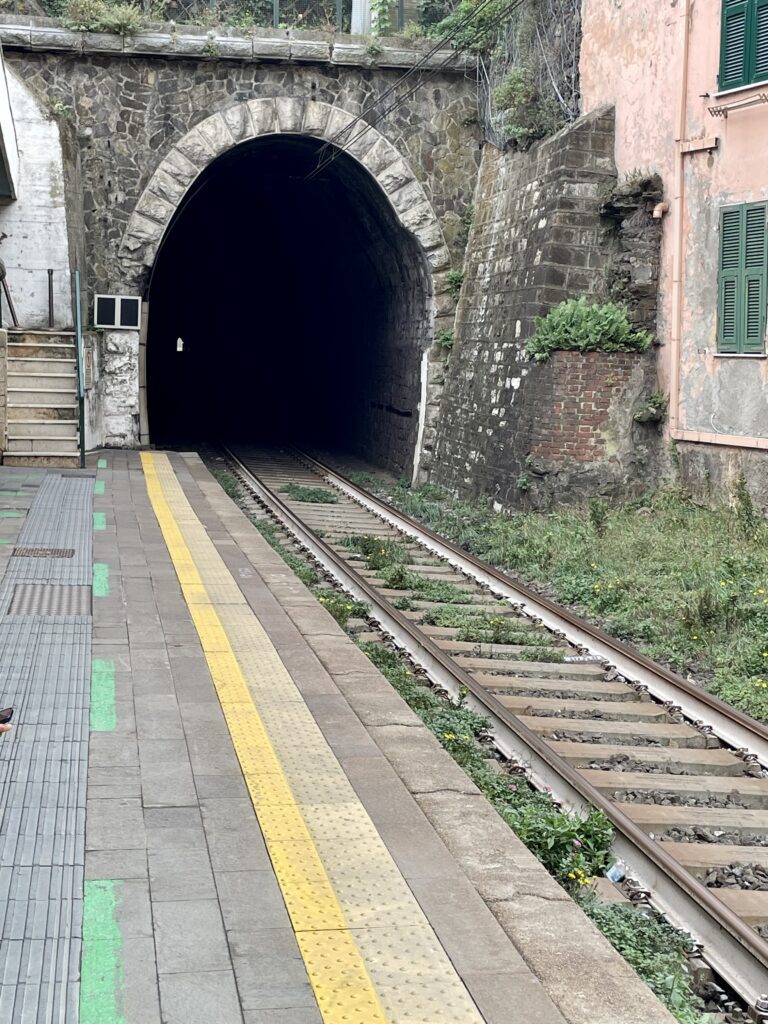
On every trip I have taken to Europe, The Cinque Terre has been a memorable destination. During previous visits we have used trains and ferry boats. This time we went through all five lands by foot and train and we had the rare pleasure of staying overnight in two of the small fishing villages. The trains stop in all 5 villages, but you can choose to hike part or all of the national park or purchase a ferry pass to go from village to village. The boats and trains pass through regularly, so you can go at your own pace and board the next ride, which is usually available within the half hour. If you choose to hike, check the Cinque Terre website for information on trails requiring a pass. You can purchase the pass in any of the five villages. You can also purchase a train/hike pass online.
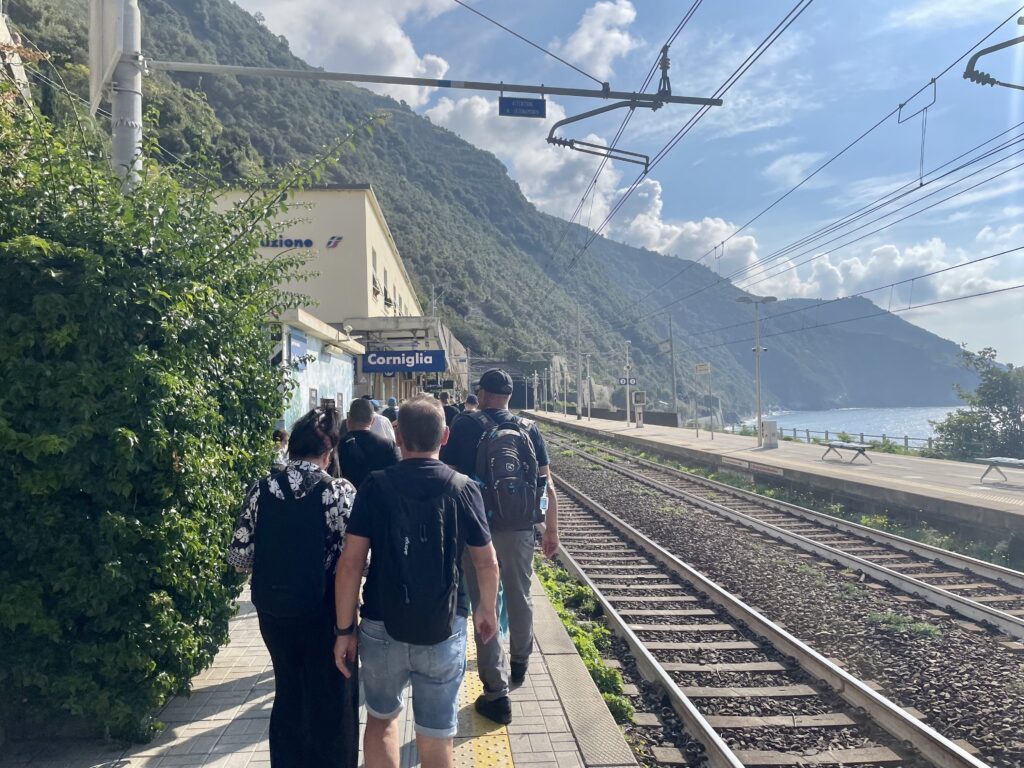
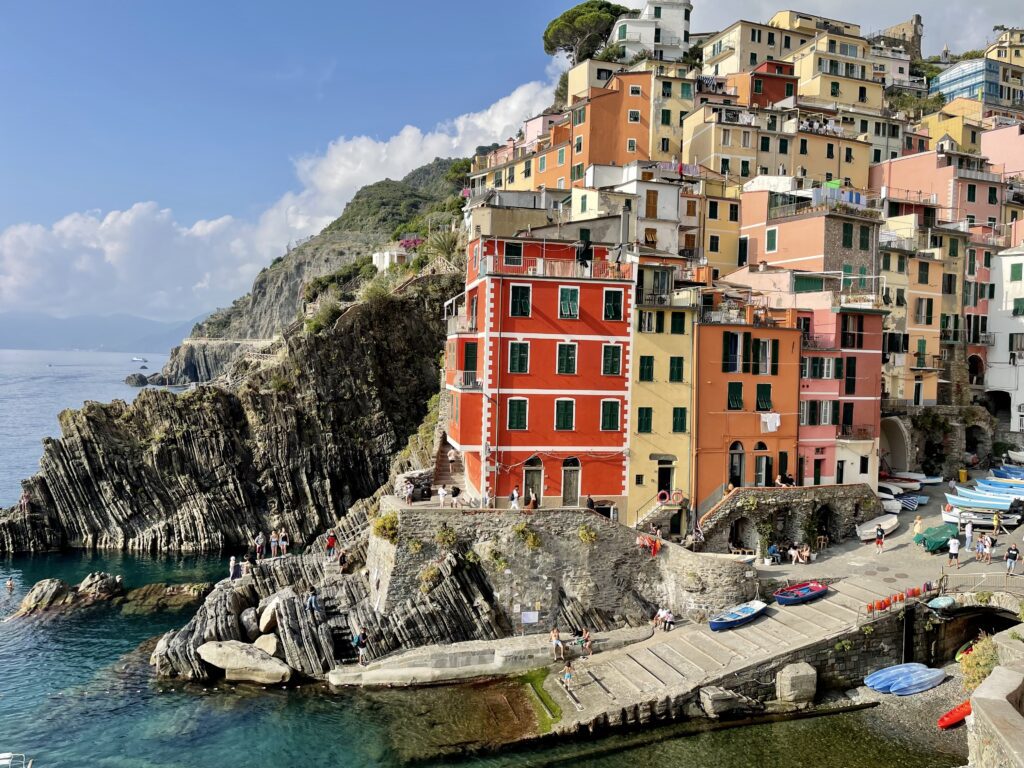
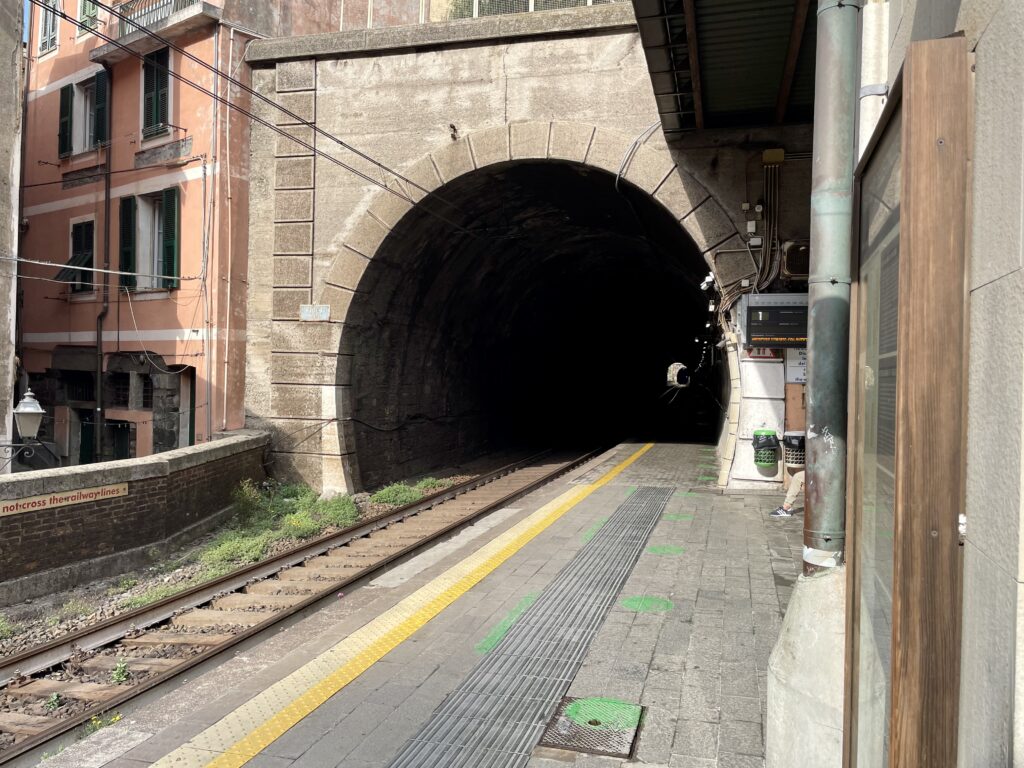
Genova
Since we have family living in Genova, it has also been a regular stop for our visits to Europe. I have been there three times, each with different family members. Genova has never disappointed us for culture and discovery. It is rich in history and is off the beaten path of tourism and commercialism. This makes for a pleasant place to stay while visiting other regions of Italy. Of course, the train is the primary mode of transportation in this part of Italy. Mixed with a bit of bus travel and a good pair of walking shoes, you can reach just about any place in Northern Italy easily from this location. There are over twenty regional train stations in Genova making trail travel easy to access and convenient from just about any location in the city. The trains are an integral part of the culture in this region.
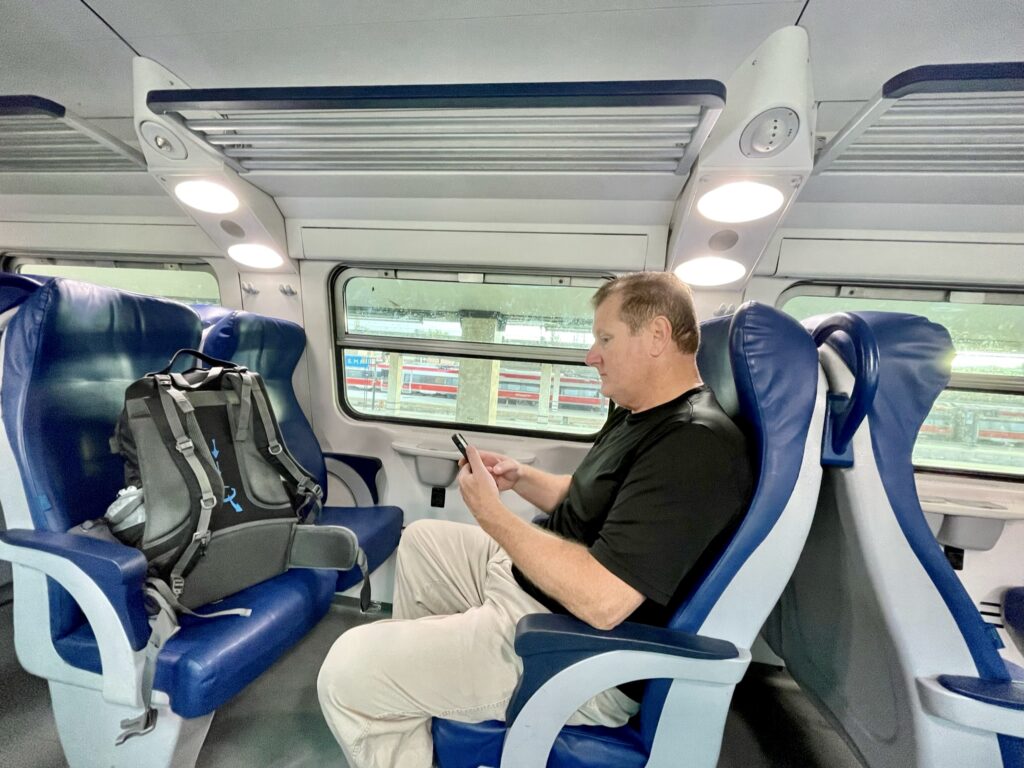
Tim by Train, Founder of Travel by Train – email: timbytrains@gmail.com

